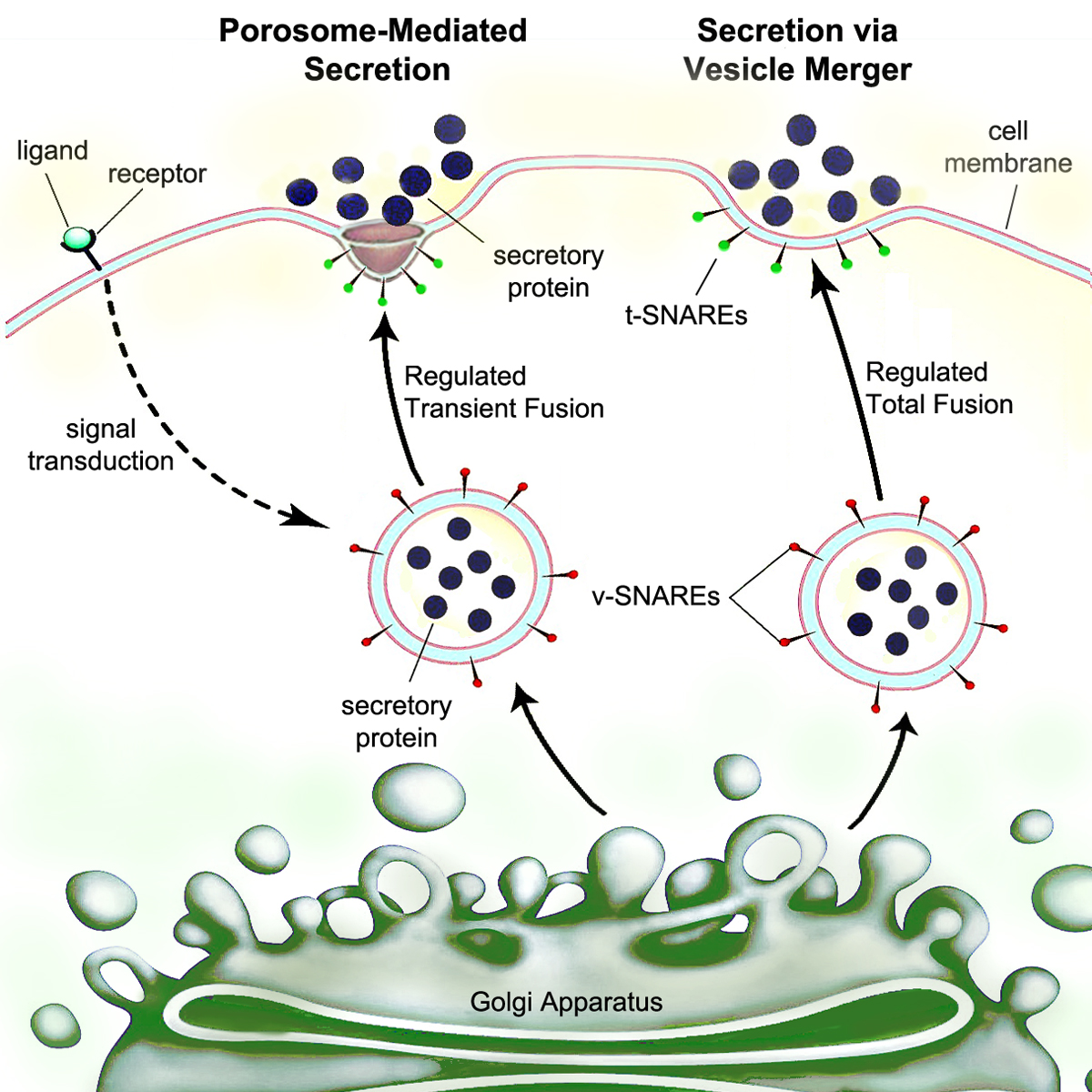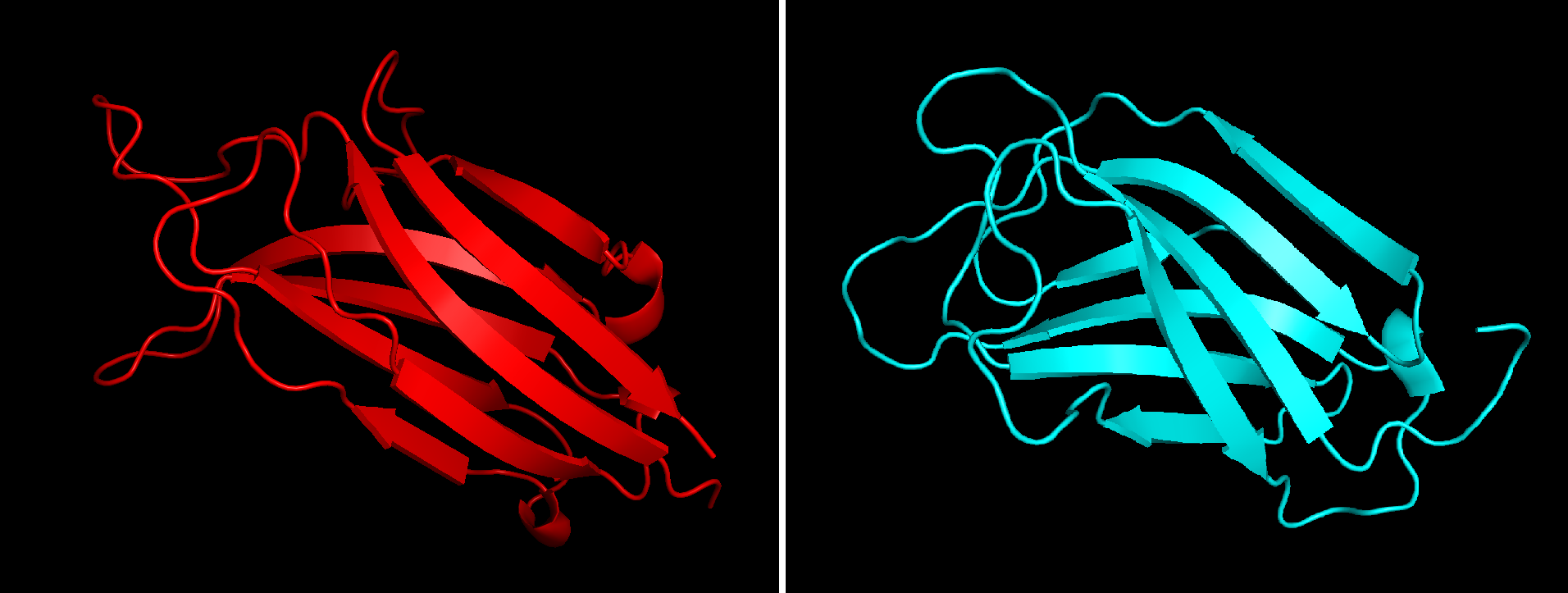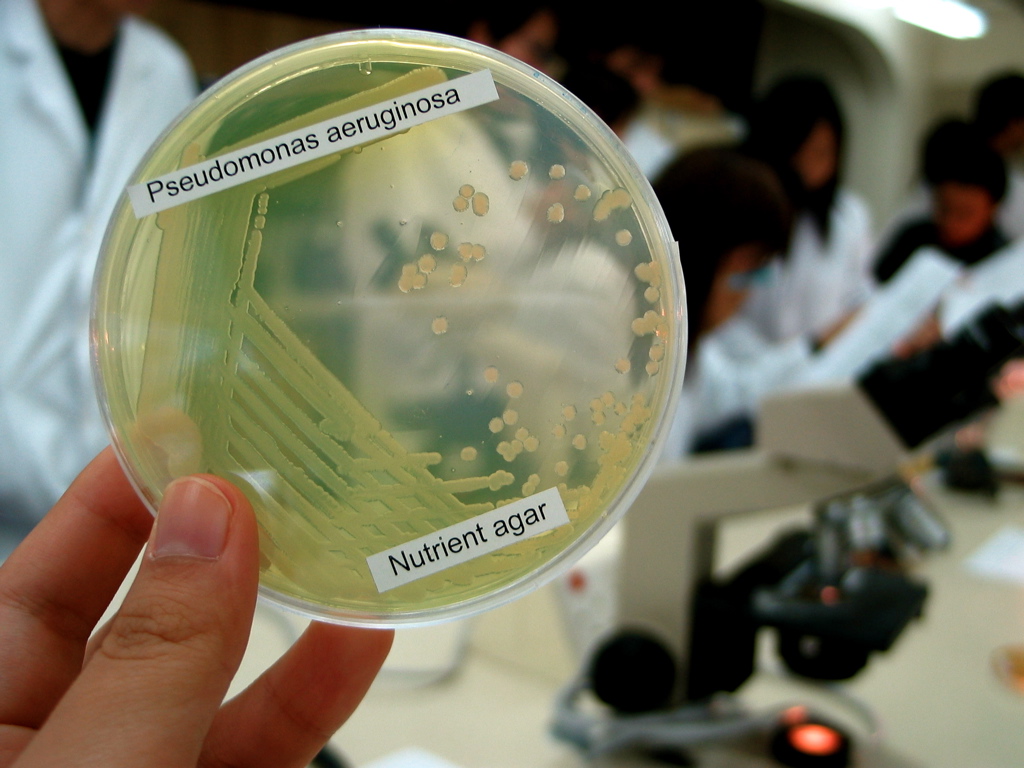|
Twin-arginine Translocation Pathway
The twin-arginine translocation pathway (Tat pathway) is a protein export, or secretion pathway found in plants, bacteria, and archaea. In contrast to the Sec pathway which transports proteins in an unfolded manner, the Tat pathway serves to actively translocate folded proteins across a lipid membrane bilayer. In plants, the Tat translocase is located in the thylakoid membrane of the chloroplast, where it acts to export proteins into the thylakoid lumen. In bacteria, the Tat translocase is found in the cytoplasmic membrane and serves to export proteins to the cell envelope, or to the extracellular space. The existence of a Tat translocase in plant mitochondria is also proposed. In the plant thylakoid membrane and in Gram-negative bacteria the Tat translocase is composed of three essential membrane proteins; TatA, TatB, and TatC. In the most widely studied Tat pathway, that of the Gram-negative bacterium ''Escherichia coli'', these three proteins are expressed from an operon with ... [...More Info...] [...Related Items...] OR: [Wikipedia] [Google] [Baidu] |
Secretion
Secretion is the movement of material from one point to another, such as a secreted chemical substance from a cell or gland. In contrast, excretion is the removal of certain substances or waste products from a cell or organism. The classical mechanism of cell secretion is via secretory portals at the plasma membrane called porosomes. Porosomes are permanent cup-shaped lipoprotein structures embedded in the cell membrane, where secretory vesicles transiently dock and fuse to release intra-vesicular contents from the cell. Secretion in bacterial species means the transport or translocation of effector molecules. For example: proteins, enzymes or toxins (such as cholera toxin in pathogenic bacteria e.g. '' Vibrio cholerae'') from across the interior (cytoplasm or cytosol) of a bacterial cell to its exterior. Secretion is a very important mechanism in bacterial functioning and operation in their natural surrounding environment for adaptation and survival. In eukaryotic cells ... [...More Info...] [...Related Items...] OR: [Wikipedia] [Google] [Baidu] |
Signal Peptide
A signal peptide (sometimes referred to as signal sequence, targeting signal, localization signal, localization sequence, transit peptide, leader sequence or leader peptide) is a short peptide (usually 16–30 amino acids long) present at the N-terminus (or occasionally nonclassically at the C-terminus or internally) of most newly synthesized proteins that are destined toward the secretory pathway. These proteins include those that reside either inside certain organelles (the endoplasmic reticulum, Golgi or endosomes), secreted from the cell, or inserted into most cellular membranes. Although most type I membrane-bound proteins have signal peptides, most type II and multi-spanning membrane-bound proteins are targeted to the secretory pathway by their first transmembrane domain, which biochemically resembles a signal sequence except that it is not cleaved. They are a kind of target peptide. Function (translocation) Signal peptides function to prompt a cell to transloc ... [...More Info...] [...Related Items...] OR: [Wikipedia] [Google] [Baidu] |
Mycobacterium Tuberculosis
''Mycobacterium tuberculosis'' (M. tb), also known as Koch's bacillus, is a species of pathogenic bacteria in the family Mycobacteriaceae and the causative agent of tuberculosis. First discovered in 1882 by Robert Koch, ''M. tuberculosis'' has an unusual, waxy coating on its cell surface primarily due to the presence of mycolic acid. This coating makes the cells impervious to Gram staining, and as a result, ''M. tuberculosis'' can appear weakly Gram-positive. Acid-fastness, Acid-fast stains such as Ziehl–Neelsen stain, Ziehl–Neelsen, or Fluorescence, fluorescent stains such as Auramine O, auramine are used instead to identify ''M. tuberculosis'' with a microscope. The physiology of ''M. tuberculosis'' is highly aerobic organism, aerobic and requires high levels of oxygen. Primarily a pathogen of the mammalian respiratory system, it infects the lungs. The most frequently used diagnostic methods for tuberculosis are the Mantoux test, tuberculin skin test, Acid-Fast Stain, aci ... [...More Info...] [...Related Items...] OR: [Wikipedia] [Google] [Baidu] |
Phospholipase C
Phospholipase C (PLC) is a class of membrane-associated enzymes that cleave phospholipids just before the phosphate group (see figure). It is most commonly taken to be synonymous with the human forms of this enzyme, which play an important role in eukaryotic cell physiology, in particular signal transduction pathways. Phospholipase C's role in signal transduction is its cleavage of phosphatidylinositol 4,5-bisphosphate (PIP2) into diacyl glycerol (DAG) and inositol 1,4,5-trisphosphate (IP3), which serve as second messengers. Activators of each PLC vary, but typically include heterotrimeric G protein subunits, protein tyrosine kinases, small G proteins, Ca2+, and phospholipids. There are thirteen kinds of mammalian phospholipase C that are classified into six isotypes (β, γ, δ, ε, ζ, η) according to structure. Each PLC has unique and overlapping controls over expression and subcellular distribution. However, PLC is not limited to mammals, and is present in bacteria a ... [...More Info...] [...Related Items...] OR: [Wikipedia] [Google] [Baidu] |
Virulence Factors
Virulence factors (preferably known as pathogenicity factors or effectors in botany) are cellular structures, molecules and regulatory systems that enable microbial pathogens (bacteria, viruses, fungi, and protozoa) to achieve the following: * colonization of a niche in the host (this includes movement towards and attachment to host cells) * immunoevasion, evasion of the host's immune response * immunosuppression, inhibition of the host's immune response (this includes leukocidin-mediated cell death) * entry into and exit out of cells (if the pathogen is an intracellular one) * obtain nutrition from the host Specific pathogens possess a wide array of virulence factors. Some are chromosomally encoded and intrinsic to the bacteria (e.g. capsules and endotoxin), whereas others are obtained from mobile genetic elements like plasmids and bacteriophages (e.g. some exotoxins). Virulence factors encoded on mobile genetic elements spread through horizontal gene transfer, and can convert ... [...More Info...] [...Related Items...] OR: [Wikipedia] [Google] [Baidu] |
Yersinia Pseudotuberculosis
''Yersinia pseudotuberculosis'' is a Gram-negative bacterium that causes Far East scarlet-like fever in humans, who occasionally get infected zoonotically, most often through the food-borne route. Animals are also infected by ''Y. pseudotuberculosis''. The bacterium is urease positive. Pathogenesis In animals, ''Y. pseudotuberculosis'' can cause tuberculosis-like symptoms, including localized tissue necrosis and granulomas in the spleen, liver, and lymph nodes. In humans, symptoms of Far East scarlet-like fever are similar to those of infection with '' Yersinia enterocolitica'' (fever and right-sided abdominal pain), except that the diarrheal component is often absent, which sometimes makes the resulting condition difficult to diagnose. ''Y. pseudotuberculosis'' infections can mimic appendicitis, especially in children and younger adults, and, in rare cases, the disease may cause skin complaints ( erythema nodosum), joint stiffness and pain ( reactive arthritis), or sprea ... [...More Info...] [...Related Items...] OR: [Wikipedia] [Google] [Baidu] |
Legionella Pneumophila
''Legionella pneumophila'', the primary causative agent for Legionnaires' disease, Legionnaire's disease, is an Aerobic organism, aerobic, pleomorphic, Flagellum, flagellated, non-spore-forming, Gram-negative bacteria, Gram-negative bacterium. ''L. pneumophila'' is a intracellular parasite that preferentially infects soil amoebae and freshwater protozoa for replication. Due to ''L. pneumophila’s'' ability to thrive in water, it can grow in water filtration systems, leading to faucets, showers, and other fixtures. Aerosolized water droplets containing ''L. pneumophila'' originating from these fixtures may be inhaled by humans. Upon entry to the human respiratory tract, ''L. pneumophila'' is able to infect and reproduce within human Alveolar macrophage, alveolar macrophages. This causes the onset of Legionnaires' disease, also known as legionellosis. Infected humans may display symptoms such as fever, delirium, diarrhea, and decreased liver and kidney function. ''L. pneumophila' ... [...More Info...] [...Related Items...] OR: [Wikipedia] [Google] [Baidu] |
Pseudomonas Aeruginosa
''Pseudomonas aeruginosa'' is a common Bacterial capsule, encapsulated, Gram-negative bacteria, Gram-negative, Aerobic organism, aerobic–facultative anaerobe, facultatively anaerobic, Bacillus (shape), rod-shaped bacteria, bacterium that can cause disease in plants and animals, including humans. A species of considerable medical importance, ''P. aeruginosa'' is a multiple drug resistance, multidrug resistant pathogen recognized for its ubiquity, its Intrinsic and extrinsic properties, intrinsically advanced antibiotic resistance mechanisms, and its association with serious illnesses – hospital-acquired infections such as ventilator-associated pneumonia and various sepsis syndromes. ''P. aeruginosa'' is able to selectively inhibit various antibiotics from penetrating its outer membrane'' ''– and has high resistance to several antibiotics. According to the World Health Organization ''P. aeruginosa'' poses one of the greatest threats to humans in terms of an ... [...More Info...] [...Related Items...] OR: [Wikipedia] [Google] [Baidu] |
Pathogens
In biology, a pathogen (, "suffering", "passion" and , "producer of"), in the oldest and broadest sense, is any organism or agent that can produce disease. A pathogen may also be referred to as an infectious agent, or simply a germ. The term ''pathogen'' came into use in the 1880s. Typically, the term ''pathogen'' is used to describe an ''infectious'' microorganism or agent, such as a virus, bacterium, protozoan, prion, viroid, or fungus. Small animals, such as helminths and insects, can also cause or transmit disease. However, these animals are usually referred to as parasites rather than pathogens. The scientific study of microscopic organisms, including microscopic pathogenic organisms, is called microbiology, while parasitology refers to the scientific study of parasites and the organisms that host them. There are several pathways through which pathogens can invade a host. The principal pathways have different episodic time frames, but soil has the longest or most pers ... [...More Info...] [...Related Items...] OR: [Wikipedia] [Google] [Baidu] |
Genome
A genome is all the genetic information of an organism. It consists of nucleotide sequences of DNA (or RNA in RNA viruses). The nuclear genome includes protein-coding genes and non-coding genes, other functional regions of the genome such as regulatory sequences (see non-coding DNA), and often a substantial fraction of junk DNA with no evident function. Almost all eukaryotes have mitochondrial DNA, mitochondria and a small mitochondrial genome. Algae and plants also contain chloroplast DNA, chloroplasts with a chloroplast genome. The study of the genome is called genomics. The genomes of many organisms have been Whole-genome sequencing, sequenced and various regions have been annotated. The first genome to be sequenced was that of the virus φX174 in 1977; the first genome sequence of a prokaryote (''Haemophilus influenzae'') was published in 1995; the yeast (''Saccharomyces cerevisiae'') genome was the first eukaryotic genome to be sequenced in 1996. The Human Genome Project ... [...More Info...] [...Related Items...] OR: [Wikipedia] [Google] [Baidu] |
Tracy Palmer
Tracy Palmer is a British microbiologist who is a professor of microbiology in the Biosciences Institute at Newcastle University in Tyne & Wear, England. She is known for her work on the twin-arginine translocation (Tat) pathway. Early life and education Palmer was born in Sheffield on 8 May 1967, the only child of Enid (née Wilson 1939-2000) and Roy Palmer 1936-2023 (a steelworker). Palmer was brought up in the steel town of Stocksbridge in South Yorkshire where she attended Stocksbridge High School. Palmer attended the University of Birmingham where she was awarded a Bachelor of Science degree in biochemistry in 1988 followed by a PhD in 1992 for research investigating the enzyme kinetics of the proton pumping transhydrogenase from photosynthetic bacteria. She was inspired by the work of Peter D. Mitchell and his work on chemiosmosis during her PhD. Career and research Palmer's main research interest is in the processes by which bacteria secrete proteins into their environm ... [...More Info...] [...Related Items...] OR: [Wikipedia] [Google] [Baidu] |
Translocon
The translocon (also known as a translocator or translocation channel) is a complex of proteins associated with the translocation of polypeptides across membranes. In eukaryotes the term translocon most commonly refers to the complex that transports nascent polypeptides with a targeting signal sequence into the interior (cisternal or lumenal) space of the endoplasmic reticulum (ER) from the cytosol. This translocation process requires the protein to cross a hydrophobic lipid bilayer. The same complex is also used to integrate nascent proteins into the membrane itself (membrane proteins). In prokaryotes, a similar protein complex transports polypeptides across the (inner) plasma membrane or integrates membrane proteins. In either case, the protein complex is formed from Sec proteins (Sec: secretory), with the hetero-trimeric Sec61 being the channel. In prokaryotes, the homologous channel complex is known as SecYEG. This article focuses on the cell's native translocons, but pathogen ... [...More Info...] [...Related Items...] OR: [Wikipedia] [Google] [Baidu] |







